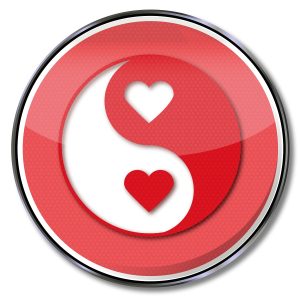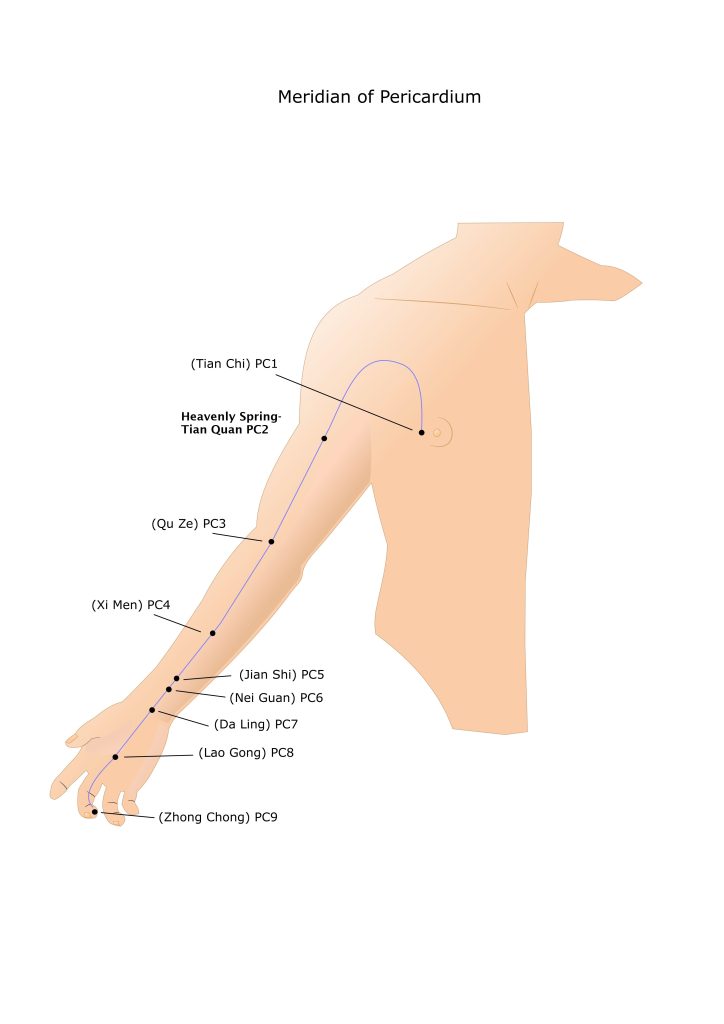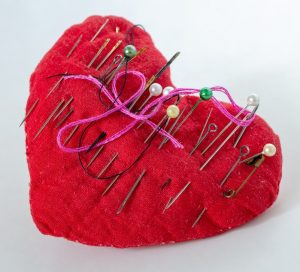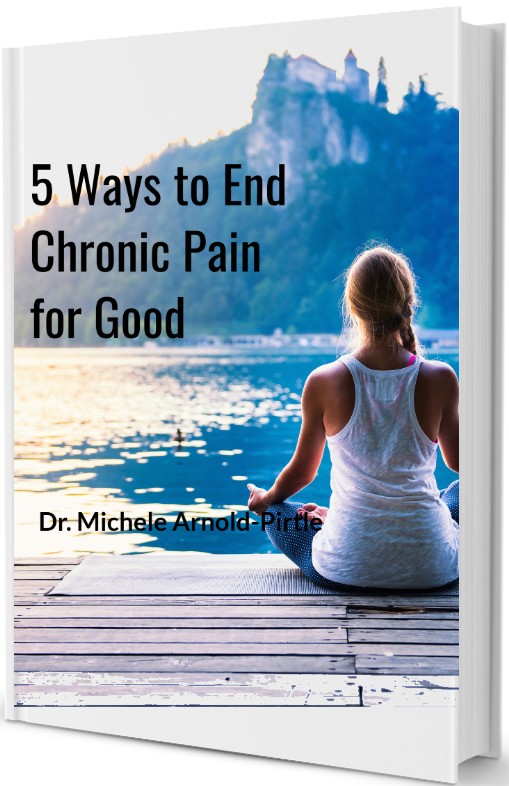Hypertension
How to meditate using a tuning fork
Have you wanted to start doing meditation? Do you find it difficult to do it? Do you think it’s required to have a blank mind or empty mind?
Try using a vibrational tuning fork.
What is the Real Source of My Pain or Disease?
Part 1 of the series: How To Get the Best and Quickest Results out of Your Acupuncture Treatments?
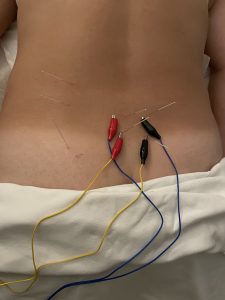 Your healing, pain, and general health are deeply affected by your nervous system. When it is on overdrive from emotions like fear, grief, anger, the stress hormones released depress your immune system and slow recovery. A dysfunctional nervous system can be the source of your chronic pain.
Your healing, pain, and general health are deeply affected by your nervous system. When it is on overdrive from emotions like fear, grief, anger, the stress hormones released depress your immune system and slow recovery. A dysfunctional nervous system can be the source of your chronic pain.
Acupuncture is one of the best modalities that can address pain, calm the mind, lift the mood, and stimulate regeneration. It can help normalize a dysfunctional nervous system, which is at the root of chronic pain.
Pain is considered chronic if it has been around for over three months. This is because the pain becomes hard wired into our systems. The source of pain:
- Mostly from irritation and inflammation of soft tissue.
- The pain can be severe because there are over a million pain receptor sites per square inch of soft tissue.
- This affects your nervous system.
- The nervous system and your brain memorize the pain impulses.
- The brain moves the memory into the part of brain responsible for emotions and memory, the limbic system.
- This explains why intense feelings of anger, sadness, or fear can trigger, amplify, or create pain sensation even without a physical cause, or long after the injury has healed.
No Separation between the body and mind.
Think about it. Circumstances in life can create a hyper-vigilant nervous system stuck in fight-or-flight mode. Even without any imminent danger. When the body is constantly bombarded with stress hormones, it will develop physical symptoms. Physical symptoms are indicators that you are being triggered firing up your nervous system, even if you don’t feel emotionally stressed. The brain processes emotions and physical pain the same way. That makes it clear that there is no separation between the body and the mind.
If you don’t recognize the mental-emotional pain or stress, your body will manifest them as physical symptoms. Patterns from the normal stresses of every life can be held in the body as tension. Stress does not always mean unhappy, sad, anxious, depressed, angry, or that you aren’t living your best life you want to live.
We all experience the ups and downs living with our thoughts moment to moment. A person can be perfectly happy with no real-life stressors to worry about and then begin to experience chronic pain. Perhaps this person had an injury of a muscle strain, the pain is intense, and he or she is having difficulties with normal daily activities like putting a shirt or jacket on. If there is too much worry, and disregard for the time needed to heal, the thoughts circle around that there must be something really wrong. This person might start telling themselves that they aren’t getting better, and that they won’t be able to return to their normal selves again. They keep this pain and injury on the top of their mind. They may even start to feel angry and frustrated about it. Perhaps even scared. The feeling of sadness and grief may creep in as they long for their old self to do things they love to do but can’t anymore. The pain is now associated with these emotions. There is the self-pressure, and pressure from others to feel better that isn’t consistent with the time it takes for normal healing of soft tissue.
Pain makes us crazy. I get it. I’m not pointing my finger at you. I’ve been there. Even with everything that I know clinically, I have had pain that made me feel as if I would do anything to make it stop along with the need to find out the cause. When clinically, and logically I knew it was a soft tissue strain or sprain.
Tension is at the root of it.
Repetitive and minor strains are the worst. They occur from doing a common activity that you frequently engage in. It usually begins while holding tension in your body while doing the activity. Tension held in our body is mostly subconscious tightening of the muscles in tandem with holding our breath. Our breathing is not deep and relaxed. A fleeting stressful thought causes us to tense up. This is not a good thing when our muscles, tendons, ligaments, and bones need the blood circulation to deliver oxygen, and nutrients, and to remove waste products. With tension our nerve endings secrete inflammatory chemicals instead of feel-good chemicals, water, and ions. The inflammatory chemicals are sticky like glue. The tension becomes tight bands, knots, nodules, trigger points, and soreness. The shortened constricted muscle limits our range of motion. The knots, and bands further block the free circulation of Qi-energy and blood. Think of Qi-energy as breath, oxygen, water, and electrical conduction.
“When there is free flow of Qi-energy and blood there is no pain. When there is a blockage of Qi-energy and blood there is pain.” Old Chinese Medicine proverb.
Don’t Ignore the Pain. It is a sign of tension and negative thought patterns.
Many of us will just shirk it off when we feel a minor annoying pain. The problem with ignoring the pain is that we don’t remove the irritation causing the pain. This is like continually banging your head against the wall and wondering why it hurts. Eventually the problem worsens, and our body must scream louder for us to hear it. Thus, the irritation is both, the repeated activity irritating the soft tissue, and the unpleasant thought patterns. I would like to point out that inactivity, not enough movement causes just as much a problem, if not more.
Note that tension and thought patterns can come from good things too. For example, you are working on putting together an upcoming happy event like a wedding, or anniversary party. There is a lot to do, and you have a lot on your mind! You might forget to breath when putting your to do list together. You might be very focused and intent on the project and forget to relax your muscles and joints. You have tightness in your neck and upper shoulders. You bend over to pick something up, and bam! Back spasm. You can’t ignore this type of pain.
So, the next time you experience pain don’t ignore it. Reflect on what were you doing, and where has your mind been around the time you started feeling bad. Remove the irritation by letting the painful area rest from the activity causing the problem. Apply moist heat, gentle massage, easy dynamic movements with gentle stretching. Adding acupuncture can make a big difference as well. Let go of the thoughts that no longer serve you.
You Don’t Know What You Did?
The source of the original problem could have happened within the past two weeks, or emotionally within the past year!
You might be dismissing something like staying in one position too long, standing too long, poor posture like excess lordosis (sway back). Perhaps you were sitting too long, driving too long, you were cold, or felt a cold draft. Perhaps you were picking something up bending over at the waist while rounding the lumbar, or bending at the waist while twisting, or reaching for something in an awkward position. Lifting something too heavy. Twisting the lid off a jar, wringing out a towel, carrying a baby. You were doing activities that can be disastrous like vacuuming, mopping, scrubbing the floor, laundry, dishes, making dinner, making the bed, and caring for others that require you to lift them. Now that you know these activities can be problematic you are dismissed from household chores! I’m joking of course because somebody’s got to do it. Realize that just about anything can be on this list! Do these activities mindfully with proper body mechanics, breath, release the tension, and stay present.
Sometimes when you start feeling better, and then experience a really bad day, you can’t figure out what caused it to come back. Perhaps during therapy, you may have noticed a significant reduction in pain, but still be in the healing phase. There is a chance you tried to do too much too soon causing you to suffer from a relapse. Therefore, before returning to pre-injury activity levels it is recommended to wait until you can do the activity without pain for 14 days. If it doesn’t return you can consider the problem healed.
If the pain doesn’t go away, or it gets better, but returns, or it varies up and down I will bet there is something you’re doing that you’re not aware of that is hindering the recovery. People will often exclaim, “I didn’t do anything, I don’t know why it hurts”!
Changes in Pain
Changes in pain can be indicative of healing, such as a reduction in intensity level of the pain, frequency becomes less, and the quality of pain may change. Of course, if pain worsens, comes more frequently, and causes more limitations in your life it is a sign that either you have had a flare-up from something you did, or it is getting worse.
Keep in mind that as your problem is healing there might be pain that varies in intensity. It might come and go. It might seem to move where initially it felt very diffuse that you couldn’t pinpoint the exact pain spot. Then it becomes more focused at an exact point. Or, in the beginning there is extreme pain that is felt at a precise location. Over time the intensity reduces, and it becomes very vague.
The quality of how it feels might change from sharp, shooting, throbbing, deep ache to milder occasional sharp pain that leaves quicker. Discomfort of paresthesia or neuropathy can be numbness, tingling, burning, crawling, itchy, loss of sensation and proprioception. When the nerves begin to heal, and the blood circulation improves the sensation can be uncomfortable. It might be hard to decipher good bad from the bad. Pinprick test, light touch, and proprioception improvement might help you realize whether you are feeling the discomfort of improved Qi-energy and blood flow.
We can create stress and tension from:
Common pent-up emotions and maladaptive coping mechanisms. These things cause us to tense our muscles.
- Pressure self-imposed: the drive to be perfect and good. The drive to get the work done. To focus intently.
- Self-denial for things you really desire. You let someone else have it. You fall on the sword. Leaves you feeling sense of loss. Guilt. You do it because of the self-imposed Pressure to be good, for approval, to be accepted.
- Life pressures of work, career, family, social, peers, financial, illness, aging, mortality, children, events, caregiving, etc.
- Displaced anger, which is a conscious thing.
- Childhood emotional needs not met creating low self-esteem, always looking to fulfill those. Feeling sad, hurt, angry from neglect, abuse, disapproval.
- Feeling put out by being the good guy. You expect something in return. It is not really from the goodness of your heart. There is a spark of anger for always being the good guy. This is self-denial again.
- Deep dependency needs. Take care of me. Tell me what to do.
- Survival pattern to keep you from directly feeling the distress. To keep you from expressing the emotions like anger or rage, which could be problematic for your job, career, relationship, etc.
How Does the Mind Keep You in Pain?
The muscles are reacting to the emotional-mental stress by becoming tense, rigid, hardened, and as a result, pain and/or dysfunction may occur.
- Striated muscle tension leads to tension headaches, fibromyalgia, stiff neck, and shoulders.
- Smooth muscle tension leads to irritable bowel (IBS), migraines, abdominal pain, nausea, bladder spasm.
- Cognitive-perceptual disruption causing visual blurriness, mental confusion, memory loss, dizziness, pseudo-seizures, tinnitus.
- Conversion leads to falling, lack of proprioception, unsteadiness, aphonia, paralysis, or weakness.
The following is quoted from acupuncturist, Rick Bernard in his book, Orthopedic Electroacupuncture, “When a muscle reacts to psychological stress, contraction and shortening of the muscle occurs. This contraction inhibits blood flow to the muscle resulting in oxygen deprivation to the muscle, or “ischemia” of the muscle. The classic symptom of this phenomenon is a burning sensation, though dull ache is possible as well. As these emotional stress patterns become sustained, the severity of the pain increases, and can even cause referred pain if the nerve becomes compressed by the tense muscle. The muscle can become inhibited and weak as well. It is easy to lose count of the patients who develop sciatica during a particularly stressful period of their lives, probably caused by the tensing of the piriformis muscle applying pressure on their sciatic nerve.
*This network of soft tissue including muscle, ligaments, tendons, fascia are all affected by our thoughts and emotions. When we become emotionally tense, our supporting tissue that hold our bones in place, react to this vibration. It is inevitable that the physical body will mirror and reflect the emotional one. Acknowledging this, is the first step in taking the steps necessary in healing and recovery.”
Consider the following list of interference the mind can play against our own healing. If you are experiencing challenging chronic pain, consider the possibility that you might fit with one of these reasons.
- Many people don’t want to commit to recovery. They don’t want to give up their pain. The unwillingness to let go and move forward is the greatest obstacle to healing.
- Anger contributes to obsessive, repetitive thought patterns, rigid beliefs, being like a piece of wood, unbending, not willing to consider possibilities, and having excuses for why that solution or suggestion won’t work, or why you won’t do it.
Why, what would be the point of holding onto pain?
- Pain is powerful. You feel powerful and at the same time powerless.
- You are truly a victim.
- Others demand less of you.
- You demand less of yourself.
- You can hide behind it.
- You may demand others close to you to take care of you.
- Pain or disease becomes a way of life. It becomes your identity, even an occupation.
- It’s familiar and comfortable. Change brings fear. Change is met with resistance and produces anxiety.
- MRI scans reveal the brains of chronic pain sufferers shrink. They have reduced cognitive function, have more difficulty making decisions, it is difficult to think clearly. Fortunately, when the pain resolves, the brain can return to normal size and function.
Becoming aware is the first step necessary so that you can make the necessary changes to move on.
Stop Talking About Your Pain
Here is something different you might not have heard before. If you are addicted to complaining, and you feel a sense of belonging by being part of a chronic pain group you might not like this at first. You might be resistant to the ideas. This is a sign that you would benefit from this. Don’t tell me that you never complain because you do, even if it’s to yourself.
This is about the neuroplasticity of your brain. The ability to rewire it. If you are stuck in the pain loop it needs rewiring.
- It seems like a good idea to join a pain group because it makes you feel validated, and that you are not alone. There is a sense of belonging. This is established within the first few sessions. You might feel like you have learned some great tips and advice from others about what has helped them. After you get what you need it is best to move on.
Dr. Hanscom, MD writes (2019),
- It is normal and understandable to keep sharing your pain and problems with other people, which further reinforces it.
- Solving chronic pain involves stimulating your brain to form new circuits (neuroplasticity) in the direction you choose.
- A critical step is to stop discussing any aspect of your pain.
This is because the repetition of the thoughts become embedded in your brain and become progressively stronger. What I notice, is people expect the pain before they even do anything. Do you grimace, and brace yourself before you sit up, lie down, or move your arm?
Doctor Hanscom states, “The attention paid to these circuits reinforces them. It is understandable that you would want to discuss your misery with anyone who will listen. It has engulfed your life, you are miserable, it does feel better to vent, and you often develop a common bond with other people who are in chronic pain. You spend little time with enjoyable and creative experiences. What is this behavior doing to your pain circuits?
Research shows that belonging to a pain support group lessens your chances of healing.1 There is often a lot of mutual complaining about care, their families not paying enough attention, poor medical care, the doctors not listening and failed procedures. They are all legitimate complaints, and it is completely understandable why you want to share your troubles and get support. But from a neuroplasticity viewpoint, it is a disaster.”
So not sharing your pain means:
- No complaining unless you do it directly to the person who can resolve the issue.
- No giving unasked advice – especially to your partner or children
- No criticism
- No gossiping
You will realize how much of your life energy is being consumed by discussing it and since it is often such a deep behavioral pattern, it is difficult to change.
Discussing your troubles and pain doesn’t help you develop a healthy brain and in fact accomplishes the opposite of what you want. You are reinforcing the pain circuits – both mental and physical. That is why the recommendation of this article is simple – stop negativity – all of it.
What I will add is this:
- Stop searching the internet regarding information that supports your pain. If you have a diagnosis what more are you looking for? (I’m not talking about a rare disease or cancer where you need to be proactive in finding treatment)
- Stop posting on social media your pain or problems.
- Stop posting on social media information that supports your pain.
- Stop trying to prove your pain is real. It is, so you don’t have to prove it.
- Stop looking at the past.
- Start looking into the future with a state of optimism. Be grateful, present, and patient.
- Start understanding life is up and down, it is not always what we want, we can’t control it. Let things go that no longer serve you. It is not about always being happy.
Here are Dr. Hanscom’s References:
- Friedberg F, et al. Do support groups help people with chronic fatigue syndrome and fibromyalgia? A comparison of active and inactive members. Jrn Rheum (2005); 32:2416-2420.
- Ferrari R and Deon Louw. “Effect of a pain diary use on recovery from acute whiplash injury: a cohort study.” Biomed & Biotechnol (2013); 14: 1049-1053.
- Eisenberger N, et al. “Does rejection hurt? An fMRI study of social exclusion.” Science (2003); 290
- Cole SW, et al. Social regulation of gene expression in human leucocytes. Genome Biology (2007); 8:R189. doi:10.186/gb-2007-8-9-r189
Where Does Acupuncture Fit in with All This?
Acupuncture is the only known therapy that can simultaneously…
- Assist one in releasing the emotionally charged energy that is unfavorably influencing them.
- Acupuncture can assist in creating the opportunity for awareness of self and mind-shen.
- Release constrictions in wound up shortened tense muscles
- Stimulate motor points of inhibited muscles.
- Neuromodulate the nerves bringing more blood flow, nerve function, and curbing the release of inflammatory chemicals while stimulating release of healthy chemicals, ions, and water.
- Reduce pain.
When there is pain and dysfunction the first thing that needs to be done is to reduce the pain. Then, the range of motion can improve, and then flexibility along with strength. It generally goes in that order, but there may be overlap as you reduce pain, you start to move your body, more pain releases, there is more flexibility, then the weakened muscles become stronger and stronger.
Acupuncture should always be the first choice of therapy to reduce the pain and calm the mind.
Acupuncture needling is the most powerful and direct method that releases tense, constricted muscles and fascia, improves blood flow, stops release of inflammatory chemicals, and relaxes the mind at the same time. Michele Arnold, D.A.C.M., L.Ac.
Call our office today to schedule your appointment!
(858) 613-0792 or Text (858) 613-0793.
REFERENCES
- Ma, Yun-tao; Cho, Zang Hee. Biomedical Acupuncture for Pain Management – E-Book. 2005. Elsevier Health Sciences. Kindle Edition.
- Dharmananda, Subhuti, “Restructuring American Acupuncture Practices”, May 2003. http://www.itmonline.org/arts/restructure.htm
- Duhigg, Charles. The Power of Habit: Why we do what we do in life and business. Random House. 2012. NY.
- Hanscom, David. Do You Really Need Spine Surgery? Take Control with a Surgeon’s Advice. 2019. Vertus Press: Oakland, CA.
- Bernard, Rick. Orthopedic Electroacupuncture. eBook edition.
- Wong, Joseph Y. A Manual of Neuro-Anatomical Acupuncture, Vol I: Musculo-Skeletal Disorders. 1999. The Toronto Pain and Stress Clinic, Inc. Toronto, Ontario, Canada.
a Valentine to heal and manifest all things of the heart
We have your heart on top of mind this Valentine’s Day!
Acupuncture is known not only for relief of physical pain, and improvement of general health, but also for that of the mind-emotions and spirit. In Acupuncture medicine the mind-emotions and spirit are one. The heart is the emperor of the body, and it is in charge of the mind, thus it is considered the heart-mind or Shen.
The heart is responsible for the feelings of love, forgiveness, and joy.
The heart protector is the Pericardium that surrounds the heart. It protects the heart from emotional distress. It is the gate keeper allowing the heart to be open or closed. Sometimes we are out of balance, and our heart is too wide open to someone who may not be good for us, or it is too closed off not letting love inside.
The Pericardium meridian is used more often than the heart meridian to help balance the mental-emotional-spiritual aspects of ourselves. Taking care of the Mind-Heart-Shen can help with conditions of heart like heart palpitations, insomnia, vivid dreams, cardiac pain, broken heart syndrome, anxiety, manic behavior, fear of meeting people, shyness, poor memory, or clouded thinking.
For a day like Valentine’s Day, it is good practice to express and share our love with our loved ones and significant other. It can be a time to focus on healing our heart and moving forward.
Heal and Manifest all Things Related to the Heart
use the Pericardium Meridian.
Pericardium 2-Heavenly Spring. Located 2 inches below the axillary line (armpit) between the 2 heads of the biceps brachii.
Pericardium 3-Crooked Marsh. Located medial to the bicep tendon at the elbow.
Let me share a couple Acupuncture Points found along the Pericardium Meridian. These acupoints help to:
- Bring Harmony between a heart that is too wide open and one that is too closed.
- Balance the water (fear) and Fire of intimacy.
- Cleanse and release old emotional wounds and heartbreak.
- Invigorate the spirit of fire for warmth, connection, communication, and love.
Massage gently in a clockwise fashion for 30 seconds to one minute. Breath nice and slow bringing the air into your lower abdomen expanding your ribcage and exhaling slowly making the laughter sound of HA HA HA!
If you are feeling like you need a bit more help, come in for acupuncture to heal and manifest all things related to the heart!
With love and healing,
Dr. Michele Arnold-Pirtle
Studies Show Acupuncture Helps Reduce High Blood Pressure

Those suffering from hypertension, or high blood pressure, are at risk for a host of other health issues including suffering a stroke or heart attack. And for some people, the prescription drugs used to treat high blood pressure either aren’t effective enough or bring on undesirable side effects. In recent years, studies have shown that acupuncture can be an effective and drug free alternative to combating high blood pressure. continue reading

